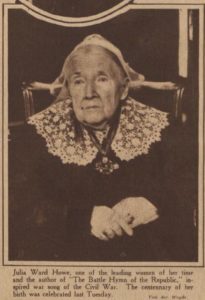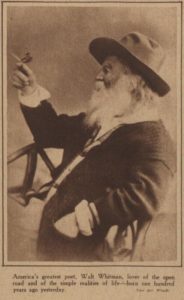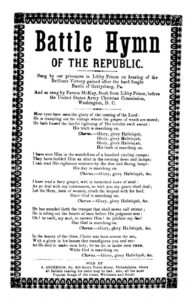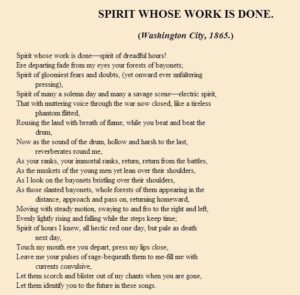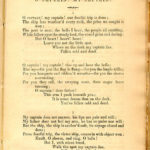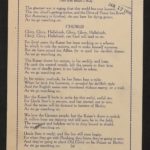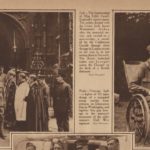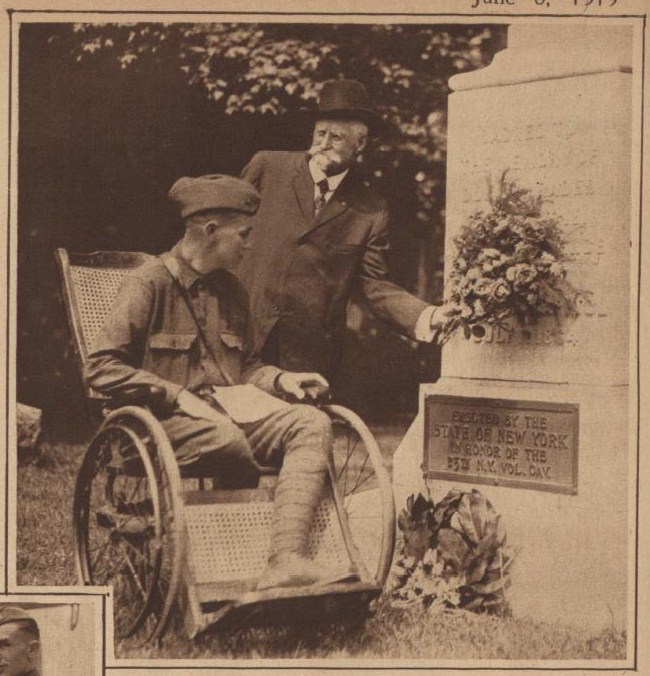In its June 1, 1919 issue the New York Tribune commemorated the birth centenaries of two well-known Civil War-era Americans.
______________________________
According to Wikipedia, Julia Ward Howe was a poet, author, abolitionist, and advocate for women’s suffrage:
She was inspired to write “The Battle Hymn of the Republic” after she and her husband visited Washington, D.C., and met Abraham Lincoln at the White House in November 1861. During the trip, her friend James Freeman Clarke suggested she write new words to the song “John Brown’s Body”, which she did on November 19. The song was set to William Steffe’s already-existing music and Howe’s version was first published in the Atlantic Monthly in February 1862. It quickly became one of the most popular songs of the Union during the American Civil War.
The Encyclopædia Britannica included Walt Whitman in its 100 most influential Americans as “Poet, journalist, and essayist whose verse collection Leaves of Grass is a landmark in the history of American literature.” The Civil War had a big impact on his life. The encyclopedia got the dates wrong (I think), but in 1863 Walt visited his brother wounded at Fredericksburg; he got a temporary job in Washington, D.C. “He spent his spare time visiting wounded and dying soldiers in the Washington hospitals, spending his scanty salary on small gifts for Confederate and Unionist soldiers alike and offering his usual ‘cheer and magnetism’ to try to alleviate some of the mental depression and bodily suffering he saw in the wards.”[1]. Drum Taps is a collection of Walt Whitman’s war poems.
____________________________________
It seems as if Julia Ward Howe and her poem are still influential, too. You can hear several renditions at YouTube. A woman in the choir sung it as a solo during communion at a church service I attended yesterday.
Walt Whitman’s poems: “Spirit Who’s Work Is Done” was published in Drum Taps. I found it at Project Gutenberg. You can browse over to The Walt Whitman Archive to view “O Captain! My Captain!”
From the Library of Congress: The Battle Hymn with the Libby Prison connection; the hymn adapted for World War I; the clipping from the June 8, 1919 issue of the New York Tribune.
The clipping includes a memorial service for Edith Cavell, a British nurse, who “is celebrated for saving the lives of soldiers from both sides without discrimination and in helping some 200 Triple Entente soldiers escape from German-occupied Belgium during the First World War, for which she was arrested. She was accused of treason, found guilty by a court-martial and sentenced to death. Despite international pressure for mercy, she was shot by a German firing squad. Her execution received worldwide condemnation and extensive press coverage.” The adapted battle hymn referred to her, “The English nurse was murdered without mercy or a trial;”Apparently she did have a court-martial
The second picture in the clipping shows a wounded doughboy and an old cavalryman placing a wreath on a monument for what looks like the 23rd New York Volunteer Cavalry. I haven’t been able to find out whether the monument still exists or where exactly it was (is).
- [1]Encyclopædia BritannicaThe Encyclopædia Britannica Guide to The 100 Most Influential Americans.Philadelphia: Running Press Book Publishers, 2008. Print. page 166.↩

